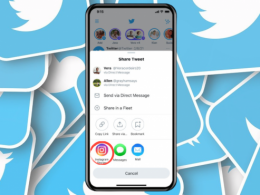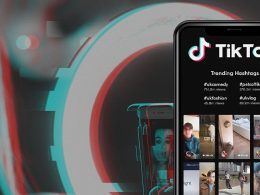Over the past 20 months, many organizations have completely redefined customer engagement strategies to meet the changing needs of consumers in the face of a global pandemic and widespread social unrest.
Consumers now expect tailored and personalized experiences when switching between digital and physical channels, but they are also more cautious about how their data is captured and implemented.
Meanwhile, organizations strive to find the right mix of talent and technologies to elevate creativity and analytics, while ensuring that their talent is as representative and inclusive as the experiences they hope to bring to market.
The fastest growing brands – those with annual revenue growth of 10% or more – are comprehensively addressing the entire customer experience, from activating a business purpose to reviewing customer data strategies. This requires collaboration from all functions of the organization, with leaders working together to create a 360 degree engagement that spans people, data, and experiences.
Many brands are re-evaluating why they exist and how they impact beyond profit, whether that’s creating a more equitable world or achieving net zero emissions. While price and quality are still among the top three purchasing considerations for most consumers, criteria related to purpose are becoming increasingly important. By being true to purpose in customer interactions, companies can connect with people in areas that matter to them and can position this as a competitive differentiator, capturing a new kind of growth, one that reflects the values of all stakeholders.
Months of research on customer behavior during COVID19 has given us some insights into the neuromarketing trends that are at work in this new reality and what to expect in the coming year. The end of 2021 is approaching and as I usually do with my readers and followers, I present the main trends in neuromarketing for 2022. 5G. The fifth generation of cellular network technology will give us faster, smarter and more stable wireless networks, thus driving advances in many other trends (for example, more connected devices and richer data streams). Wearables and Augmented Humans .
What started with fitness trackers has now grown into an entire wearable technology industry designed to enhance human performance and help us live healthier, safer, and more efficient lives. In the future, we may even see humans merge with technology to create “augmented humans” or “transhumans.” Big Data and augmented analytics .
Big Data refers to the exponential growth in the amount of data that is created in our world. Thanks to augmented analytics – highly advanced data analytics, often driven by artificial intelligence techniques – we can now make sense of and work with hugely complex and varied data streams. Supercharge customer service with AI. Many brands use AI to help predict customer behavior and deliver more personalized and creative marketing messages.
But while AI can help ensure that the right offering reaches consumers at any touch point along their journey, it is often not enough to create a dynamic customer experience. For example, a self-service chatbot that can’t connect customers with live representatives can convey that the business prioritizes cost savings over profit. Employing customer service agents and integrating artificial intelligence into critical parts of the customer experience, from producing timely offers to providing relevant information to service representatives, Machine Learning .
The increasing ability of machines to learn and act intelligently will absolutely transform our world. It is also the driving force behind many of the other trends on this list. Internet of things (IoT) . This refers to the increasing number of “smart” devices and objects that are connected to the Internet. Such devices constantly collect and transmit data, further driving the growth of Big Data and AI.
Digitally extended realities . Spanning virtual reality, augmented reality, and mixed reality, this trend highlights the movement toward creating more immersive digital experiences. Digital twins . A digital twin is a digital copy of an actual physical object, product, process, or ecosystem. This innovative technology allows us to test alterations and adjustments that would be too expensive or risky to test on the actual physical object. Natural language processing .
This technology, which enables machines to understand human language, has dramatically changed the way humans interact with machines, in particular resulting in, Voice interfaces and chatbots . Alexa, Siri, chatbots – many of us are now quite used to communicating with machines simply by speaking or typing our request. In the future, more and more companies will choose to interact with their customers through voice interfaces and chatbots. Computer vision and facial recognition . Machines can talk, so why shouldn’t they “see” too?
This technology allows machines to visually interpret the world around them, facial recognition being an excellent example. While we will undoubtedly see increased regulatory scrutiny over the use of facial recognition, this technology is going nowhere. Robots and cobots . Today’s robots are smarter than ever, learning to respond to their environment and perform tasks without human intervention. In certain industries, the future of work is likely to involve humans working seamlessly with robotic colleagues, hence the term “cobot” or “collaborative robot.”
Autonomous vehicles . The 2020s will be the decade when autonomous vehicles of all kinds – cars, taxis, trucks, and even boats – will become truly autonomous and commercially viable. Genomics and gene editing . Advances in computing and analysis have driven incredible advances in our understanding of the human genome. Now, we are moving towards altering the genetic makeup of living organisms (for example, “correcting” DNA mutations that can lead to cancer). Machine co-creativity and enhanced design .
Thanks to artificial intelligence, machines can do many things, including creating works of art and designs. As a result, we can expect creative and design processes to shift towards greater collaboration with machines. Digital platforms . Facebook, Uber and Airbnb are well-known examples of digital platforms: networks that facilitate connections and exchanges between people. This trend is changing established business models, leading many traditional companies to transition or incorporate a platform-based model.
Drones and unmanned aerial vehicles . These aircraft, which are piloted remotely or autonomously, have changed the face of military operations. But the impact doesn’t stop there: Search and rescue missions, firefighting, law enforcement, and transportation will be transformed by drone technology. Also be prepared for passenger drones (drone taxis)! Cybersecurity and resilience . As companies face new and unprecedented threats, the ability to prevent and mitigate cybersecurity threats will be critical to their success over the next decade.
Quantum computing . Quantum computers – blazingly fast computers capable of solving seemingly unsolvable problems – will make our current cutting edge technology look like something out of the Stone Age. Until now, work in quantum computing is largely restricted to labs, but we could see the first commercially available quantum computer in this decade. Robotic process automation . This technology is used to automate structured and repetitive business processes, freeing up human workers to focus on more complex and value-added jobs. This is part of a broader shift toward automation that will affect all industries. Mass customization and micro-moments . Mass customization is, unsurprisingly, the ability to offer highly personalized products or services on a large scale.
Meanwhile, the term “micro-moments” essentially means responding to customer needs at exactly the right time. Both are possible thanks to technologies like AI, Big Data, and analytics. 3D and 4D printing and additive manufacturing . Although this may seem low-tech compared to some of the other trends, 3D and 4D printing will have very wide applications and will be particularly transformative when combined with trends like mass customization. Nanotechnology and materials science .
Our growing ability to understand materials and control matter on a small scale is leading to exciting new materials and products, such as flexible displays. Building the smart creative engine. As data becomes more critical to inform customer strategies, marketers increasingly hire people with analytical skills. A survey of 556 global CMOs found that analytics expertise was more frequently cited as a key skill than creative expertise in all industries except the consumer industry.
As organizations bring together data scientists, strategists, programmers, and creatives to develop data-driven marketing initiatives, collaboration can be key to building an effective creative engine. Marketers must design more agile team structures and rethink external relationships, such as those they have with agency partners.









